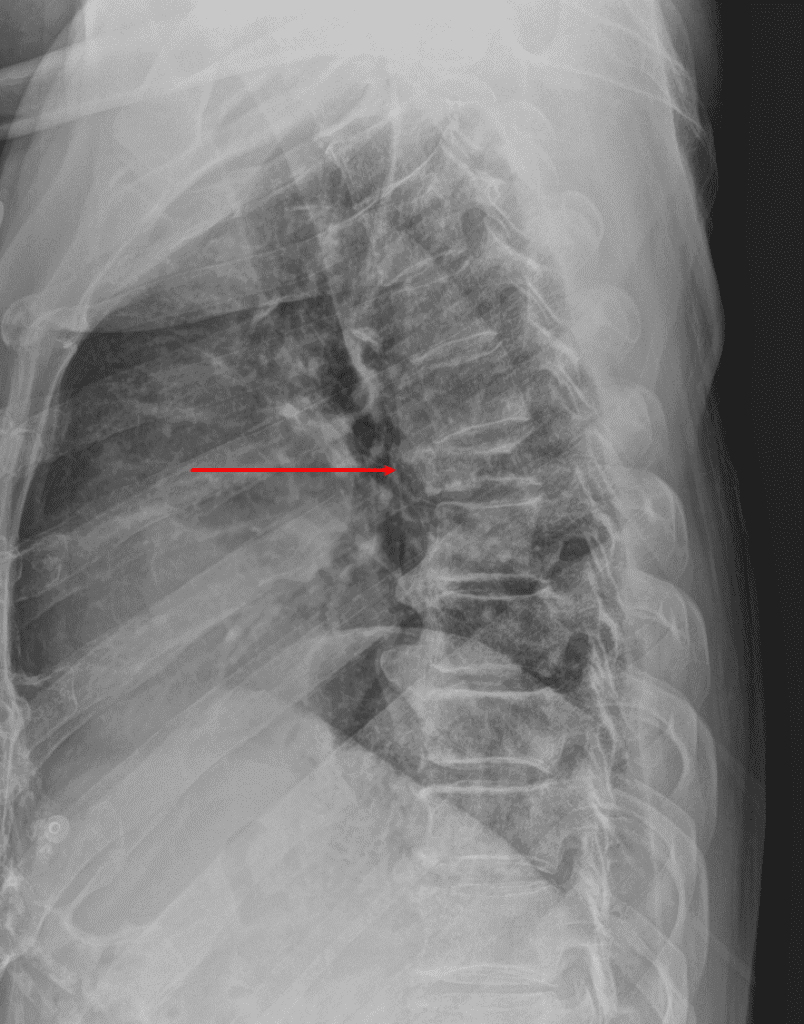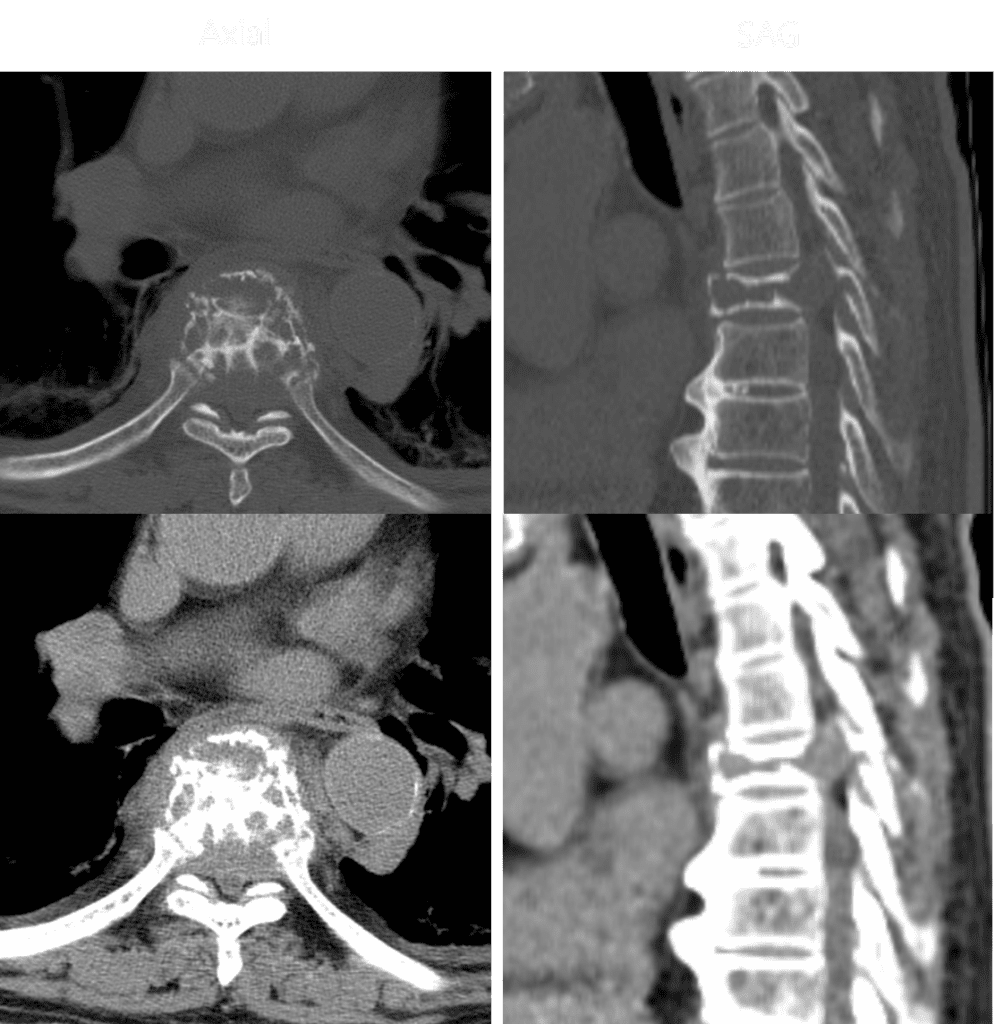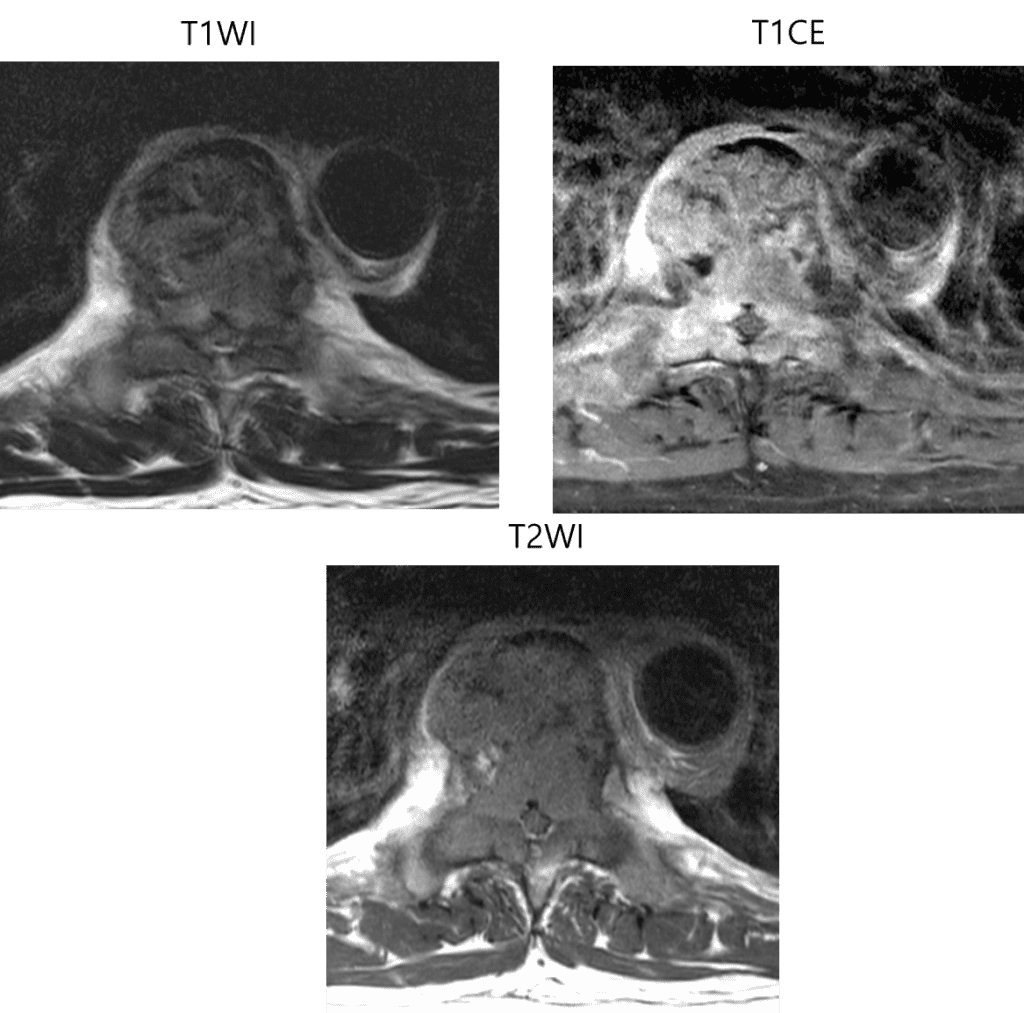An 82-year old female presented E.R with severe back pain





The most possible diagnosis was plasmacytoma, considering CT and MRI findings.
The PET-CT report suggest the possibility of stomach cancer and its bone metastasis.
Final diagnosis : Spine (T6), excision
-> Plasmacytoma
Note :
Results of immunohistochemical stainings:
cytokeratin, (-); leukocyte common antigen (-), (0); CD99, (-);
Fli-1, (0); CD31, (-); TLE-1, (+); Ki-67 labeling index, (5%).
Solitary bone plasmacytoma
Solitary monoclonal plasma cell tumor of bone or soft tissue, without evidence of multiple myeloma (MM)
Location
- Axial skeleton (m/c), followed by extremities
- Thoracic > Lumbar > Cervical
- Rib, sternum, clavicle, scapula ; 20% of all cases
Demographics
- Age : mean age – 55yrs
- M > F (2:1)
- 3-5% present monoclonal gammopathy
Imaging finding
- CT
- Lytic, compression fracture +/- soft tissue mass
- MRI
- Marrow iso to hypo signal intensity (T1WI)
- Mini brain
- Posterior element involvement (common)
- Draped curtain sign
- Heterogeneous signal intensity on T2WI
- Mild to moderate diffuse enhancement

References)
Diagnostic Imaing, Spine 2nd edition p. 5-64 ~ 67
AJNR AM J Neuroradiol. 2010 Mar;31(3):559-64
AJR 2000;175:261–263
